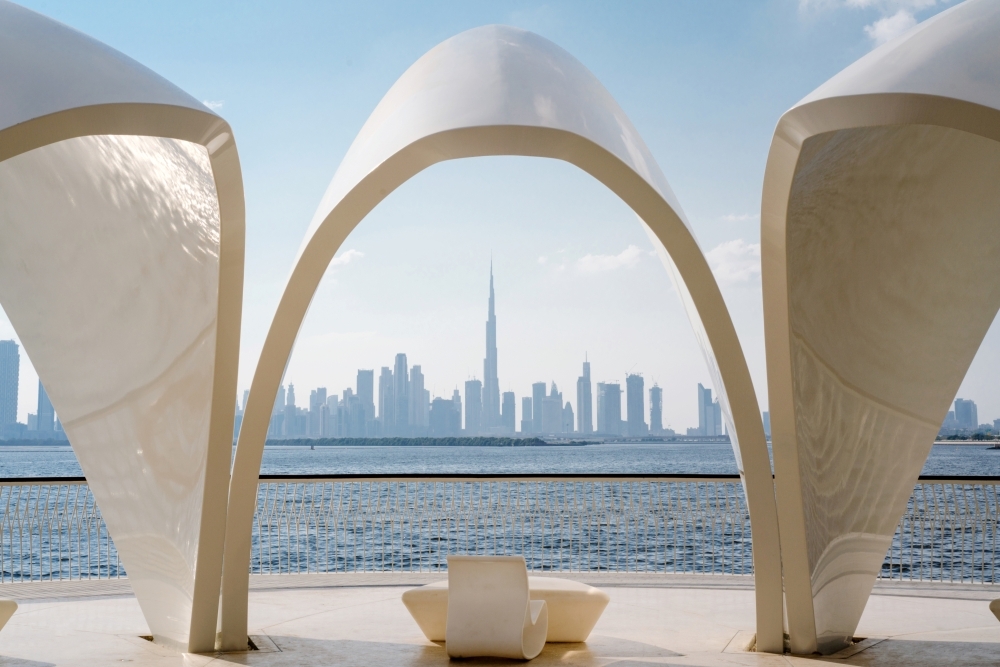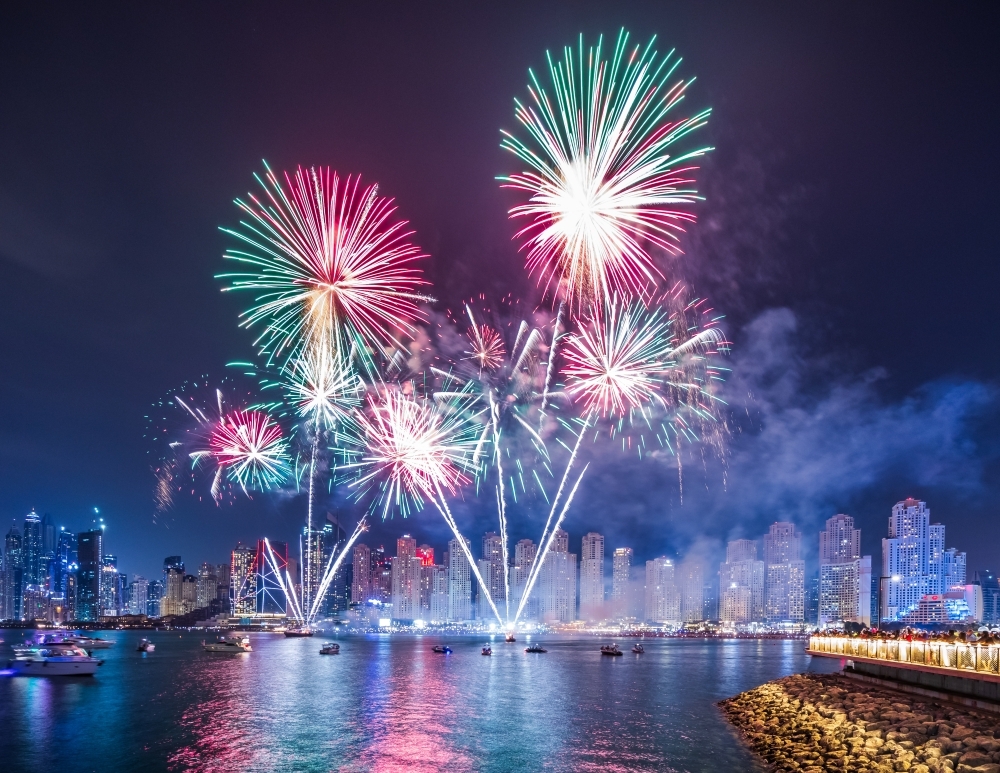Powering the Future: Inside Dubai’s Solar Mega Project
As the world pivots toward a more sustainable future, many nations are exploring pathways to achieve carbon neutrality – and the UAE is no exception. Guided by 17 interlinked sustainability goals, this ambitious Gulf nation has laid out a comprehensive "blueprint to achieve a better and more sustainable future for all." At the heart of these efforts lies a remarkable mega project, largely unknown beyond the region: the Mohammed bin Rashid Al Maktoum Solar Park. Tucked away in the desert on the outskirts of Dubai, it is the world’s largest single-site solar park developed under the Independent Power Producer (IPP) model. Read on to uncover everything you need to know about this groundbreaking initiative.
.jpg?width=850&height=501&name=unnamed%20(24).jpg)
A Vision of the Future
The Mohammed bin Rashid Al Maktoum Solar Park was born out of a need for energy diversification. The UAE has seen massive growth in the first decades of the twenty-first century, which has, undeniably, correlated with a sharp rise in energy consumption. Over-reliance on fossil fuels – of which the country is a big producer – leads to a wide range of problems, for example, the negative impacts on the health of citizens. The government realised this and, in response, came up with initiatives such as the UAE Energy Strategy 2050 and the Dubai Clean Energy Strategy 2050 – both of which aim to produce 25% clean energy by 2030 and 100% by 2050. The MBR Solar Park stands as a huge flagship project to drive this strategy forward.
A Phase by Phase Project
A development of this scale cannot be created overnight. Aligned with the UAE government’s ambitious yet attainable sustainability goals, the project has been carefully divided into a series of manageable phases. Each phase serves as a vital building block toward the broader objective of achieving carbon neutrality – echoing the old saying that Rome wasn’t built in a day.
The project was announced by Dubai Electricity and Water Authority (DEWA) in 2012, under the directives of His Highness Sheikh Mohammed bin Rashid Al Maktoum, who recognised the scale and significance of the vision from the outset.
Phase 1 laid the foundation for this groundbreaking initiative. Completed in 2013, it generated 28,000 kilowatt-hours of electricity while reducing carbon emissions by 15,000 tonnes annually. From this modest but impactful beginning, the development has continued to grow in scale and ambition.
In 2015, Phase 2 was announced and awarded to ACWA Power of Saudi Arabia in partnership with Spanish firm TSK. Completed in 2017, this phase introduced a world-record bid price of 5.6 US cents per kilowatt-hour to produce electricity – a significant decrease on previous prices. It provided clean energy for 50,000 Dubai residences and reduced emissions by 214,000 tonnes each year – an excellent start, but more was to come.
A major expansion followed with Phase 3, which became fully operational in 2020. This phase quadrupled the production capacity to 800 MW – an increase of 400% compared to Phase 2. It enabled clean energy supply for 240,000 homes and achieved an annual carbon emissions reduction of over 1 million tonnes.
Phase 4 introduced the now-iconic solar power tower – the tallest of its kind in the world. Using advanced technology, a field of mirrors concentrates sunlight onto the tower’s receiver to generate energy. Due to its complexity, the development timeline for this phase was extended.
Completed in 2023, Phase 5 – as well as the ongoing Phase 6 – further enhanced the project’s capabilities. The solar park now supplies clean energy to 540,000 residences and offsets 2.36 million tonnes of carbon emissions annually.
Looking ahead, DEWA is preparing to launch Phase 7, with the goal of expanding total capacity to more than 7,000 MW by 2030 – bringing the UAE even closer to a sustainable, low-carbon future.
See For Yourself
While the project doesn’t immediately stand out as a top-class tourist attraction, you might be surprised at what you can learn should you decide to visit. The Path of Innovation – a 380-metre-long exhibition – is designed to show off the latest in renewable technology.
Visitors to the Mohammed bin Rashid Al Maktoum Solar Park can enjoy a guided experience aboard a six-seater autonomous bus, which provides insight into the environmentally friendly technologies being developed on-site. This driverless tour takes guests to the Sustainability and Innovation Centre while offering several informative stops along the way.
The first stop brings guests up close to a photovoltaic (PV) panel, where they can observe the hardware responsible for converting sunlight into clean energy for the city. Following this, the tour highlights the solar trackers attached to the panels – devices that enhance energy capture by rotating to follow the sun’s path throughout the day.
The journey continues to the Organic Photovoltaic Solar Tree, a structure that stores solar energy during daylight hours before illuminating itself at night. Guests are then introduced to the Smart Flower – an innovative installation that uses solar panels and a tracking system to efficiently generate electricity. This device is also equipped with a self-cleaning mechanism, designed to reduce dust build-up and maintain optimal performance.
Another highlight is the Atmospheric Water Generator, a pioneering technology powered by photovoltaic energy. This standalone system extracts humidity from the air and converts it into potable water, showcasing the potential of renewable resources to address essential needs.
Additional stops include the Solar Road, Smart Street Pole, and Smart Wind Tree, each offering unique examples of integrated renewable technologies. Arguably the most impressive feature – particularly given Dubai’s climate – is the Smart Shade. This outdoor cooling system is covered with Organic Photovoltaic Panels, a tribute to sustainable innovation.
A Learning Hub
Mohammed bin Rashid Al Maktoum Solar Park isn’t just a celebration of sustainability, it also offers a wide variety of training courses designed to furnish participants with the skills and knowledge needed to navigate the latest in sustainable technologies. Courses ranging from Sustainability Principles and Sustainability Management – designed to give participants a full understanding of one of the future’s more important issues – to the more capital-focused Financial Management and Accounting courses are placing UAE and its citizens at the forefront of the global sustainability fight.
The Mohammed bin Rashid Al Maktoum Solar Park stands as a powerful testament to what can be accomplished when a government is committed to sustainability. Designed to ultimately supply clean energy to millions, the project also features educational facilities and a visitor experience aimed at inspiring individuals to contribute to a more sustainable future – a widely welcomed addition to the modern city Dubai aspires to be.



